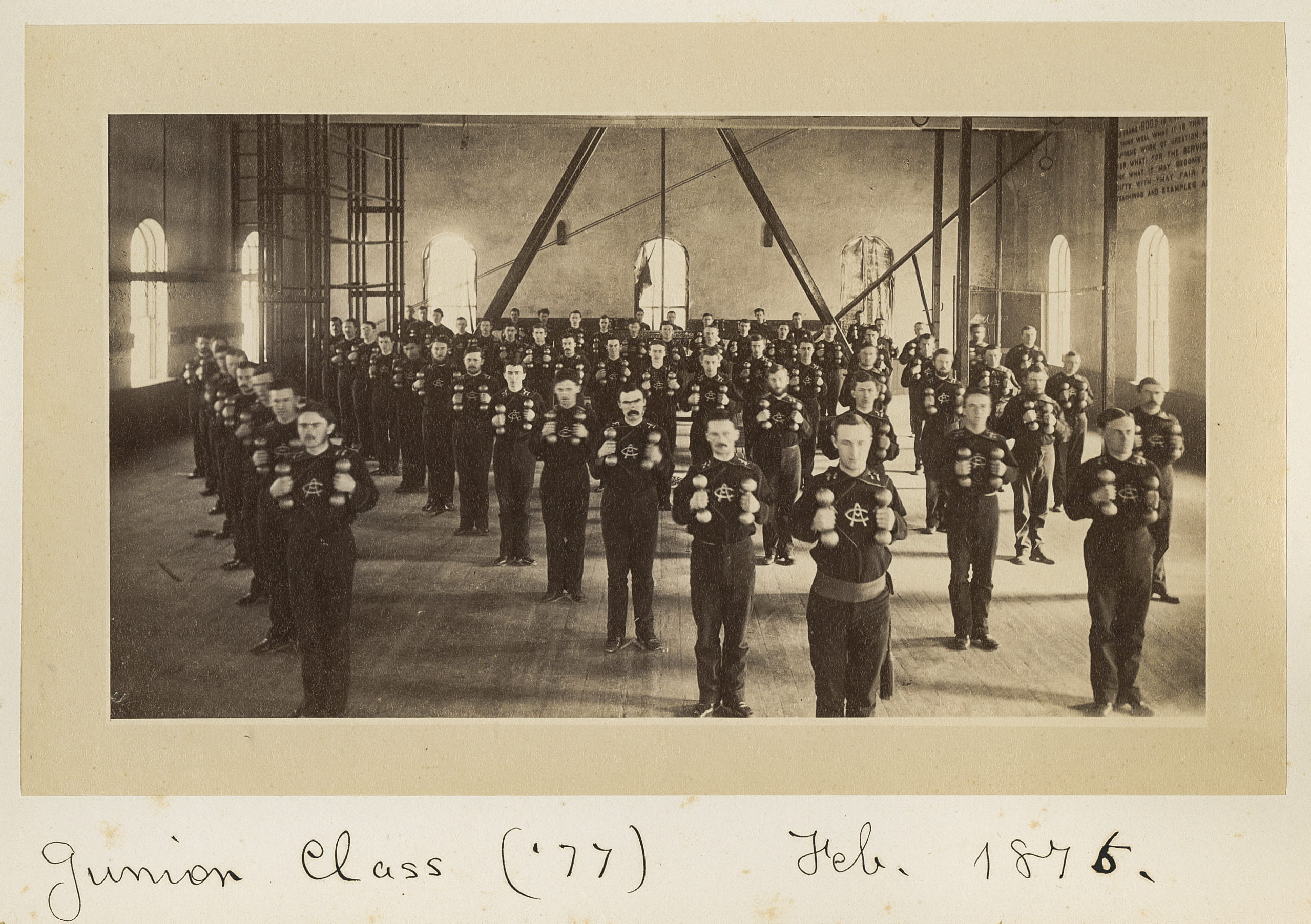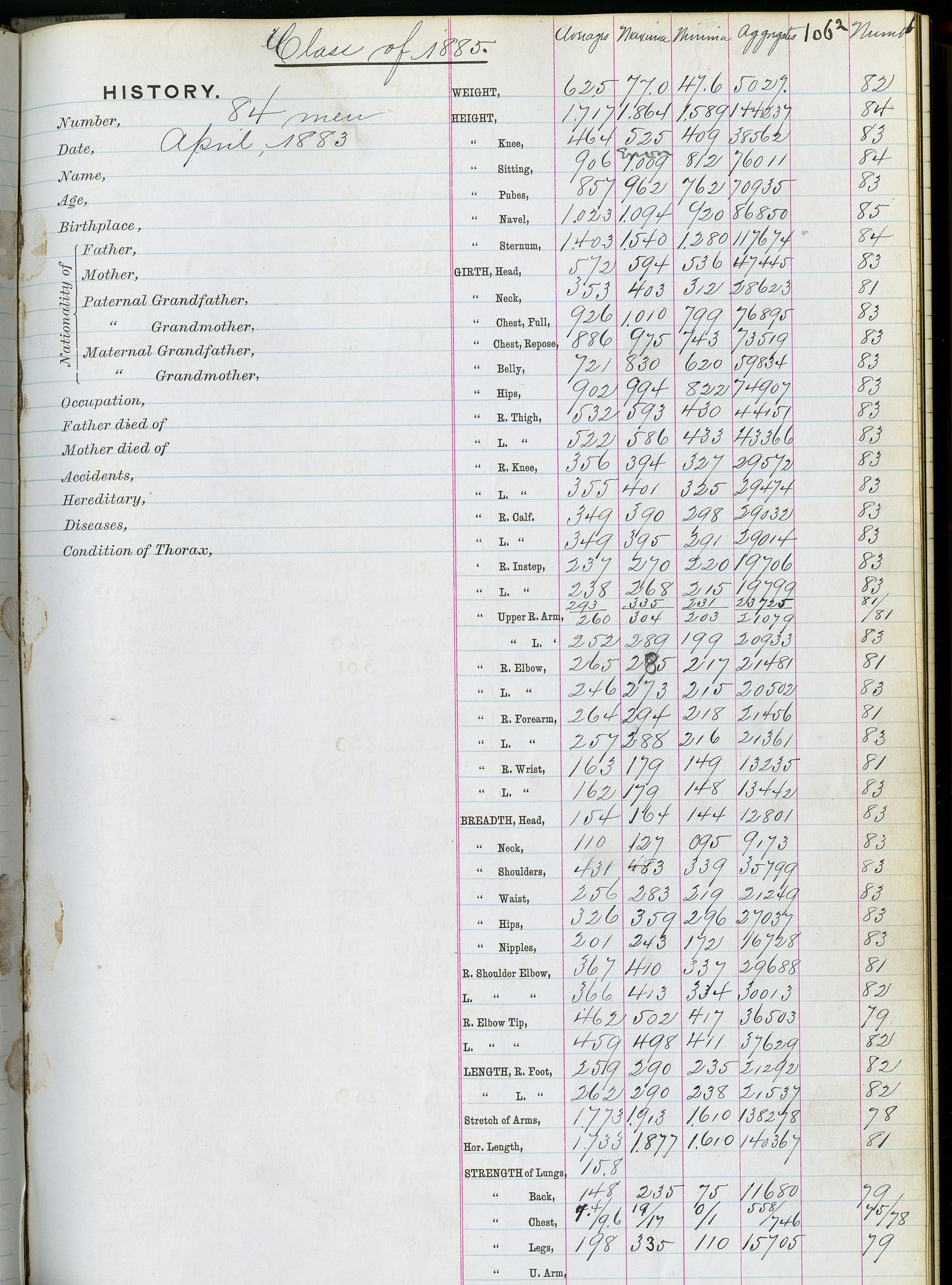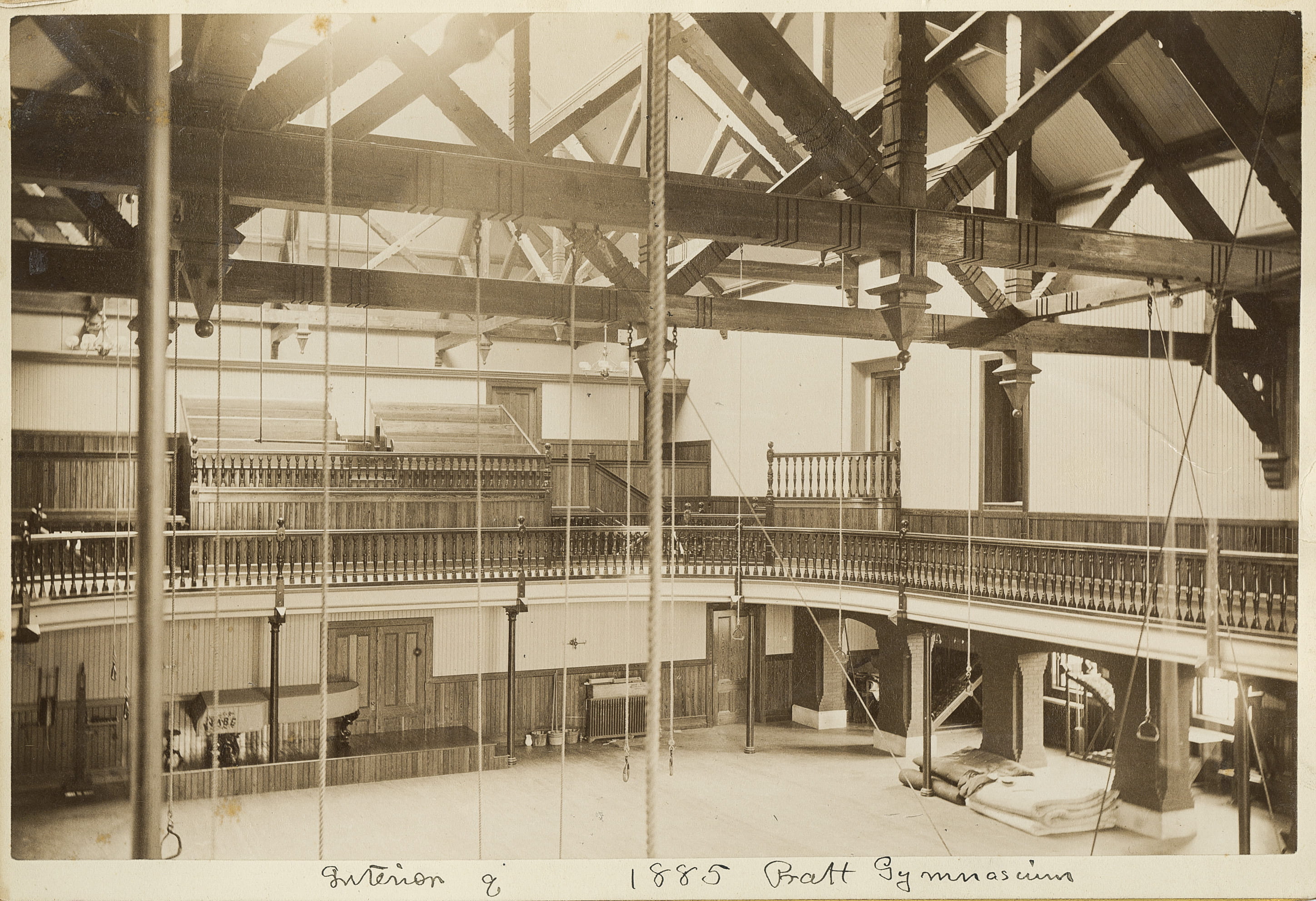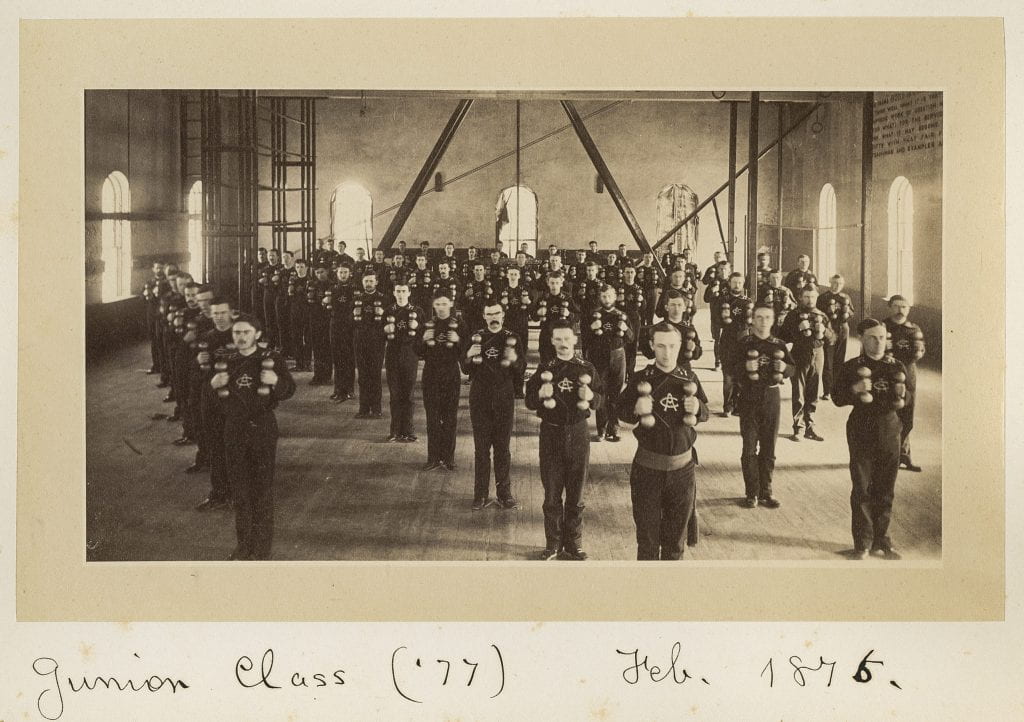
Archives and Special Collections is pleased to announce the newly available Department of Hygiene and Physical Education Records. This collection documents Amherst’s groundbreaking Physical Education program from its early development in 1861 to the 1930s.
Amherst’s Hygiene and Physical Education department was the first of its kind in the nation. Interest in organized exercise had been growing for decades, along with concern about the perceived ill health of college students, who were presumed to spend all their time hunched over their books. Following the deaths of two Amherst students in 1855, President Stearns began advocating for a formal department of physical education to improve the strength and stamina of the student body. This department was approved by the Trustees in 1860 and, following a brief stint by John Hooker, Edward Hitchcock, Jr. (son of the former president and graduate of the class of 1849) was appointed professor of Hygiene and Physical Education in 1861.
Hitchcock developed a system (later known as the “Amherst Plan”) of mandatory group calisthenics (known as light gymnastics) four days a week for all students, along with voluntary strength training (heavy gymnastics), classes in anatomy and healthy living (“hygiene” courses), and extensive measurements of all students taken throughout their college careers. These measurements were used to demonstrate the progress made by individual students and to prove the efficacy of the program as a whole.

Hitchcock’s passion was for the application of scientific methods to the field of strength training and health building. Anthropometry is the study of the human body using detailed measurements; this field was developing when the Amherst program started and came into its heyday in the late nineteenth and early twentieth centuries. Hitchcock was a notable figure on the national stage, writing articles and presenting at conferences about the anthropometry program at Amherst.
In addition to collecting measurements of individual students physical size and capacity, Hitchcock and his successors also recorded extensive health histories, and gathered statistics on a variety of topics like handedness, tobacco use, and eyesight. Most concerning, from a more modern perspective, they also gathered information on students’ national and ethnic backgrounds. The use of anthropometry for measuring and promoting physical health and development was a positive face of what eventually developed into the eugenics movement and this darker aspect can be seen in places throughout the collection.
In the 1890s, additional faculty joined the department, but the format of the courses and philosophy of the department didn’t start changing for a couple more decades. Eventually the mandatory daily classes were dropped along with calisthenics and hygiene courses; the measurement of students ended in the 1940s. By the late 1940s, the Physical Education department more closely resembled its modern counterpart, with courses in team sports and a focus on athletic training and coaching. This collection covers the period to 1933, the year when the department changed its name to drop the “Hygiene”, this symbolic shift was chosen as a cut-off point for the collection. More recent Physical Education records are also available in Archives & Special Collections.

The records of the Hygiene and Physical Education department contain a wide variety of records, from syllabi for hygiene courses and record books showing gymnasium attendance to student measurements and annual reports presented to the Board of Trustees on the department’s activities. Of particular interest are more than a dozen volumes of bound memorabilia created by Professor Hitchcock to document the history of the department, many of the items in these volumes have Hitchcock’s notes on them. Hitchcock was an avid collector (or, less kindly, a real hoarder) and his collections of college history materials formed the foundation of the current College Archives.
These records are a rich resource in many areas: not just the history of physical education, but also student health and understandings of health, the development and promotion of the study of anthropometry, constructions of masculinity, muscular Christianity, and the student experience at Amherst in the nineteenth and early twentieth centuries.







